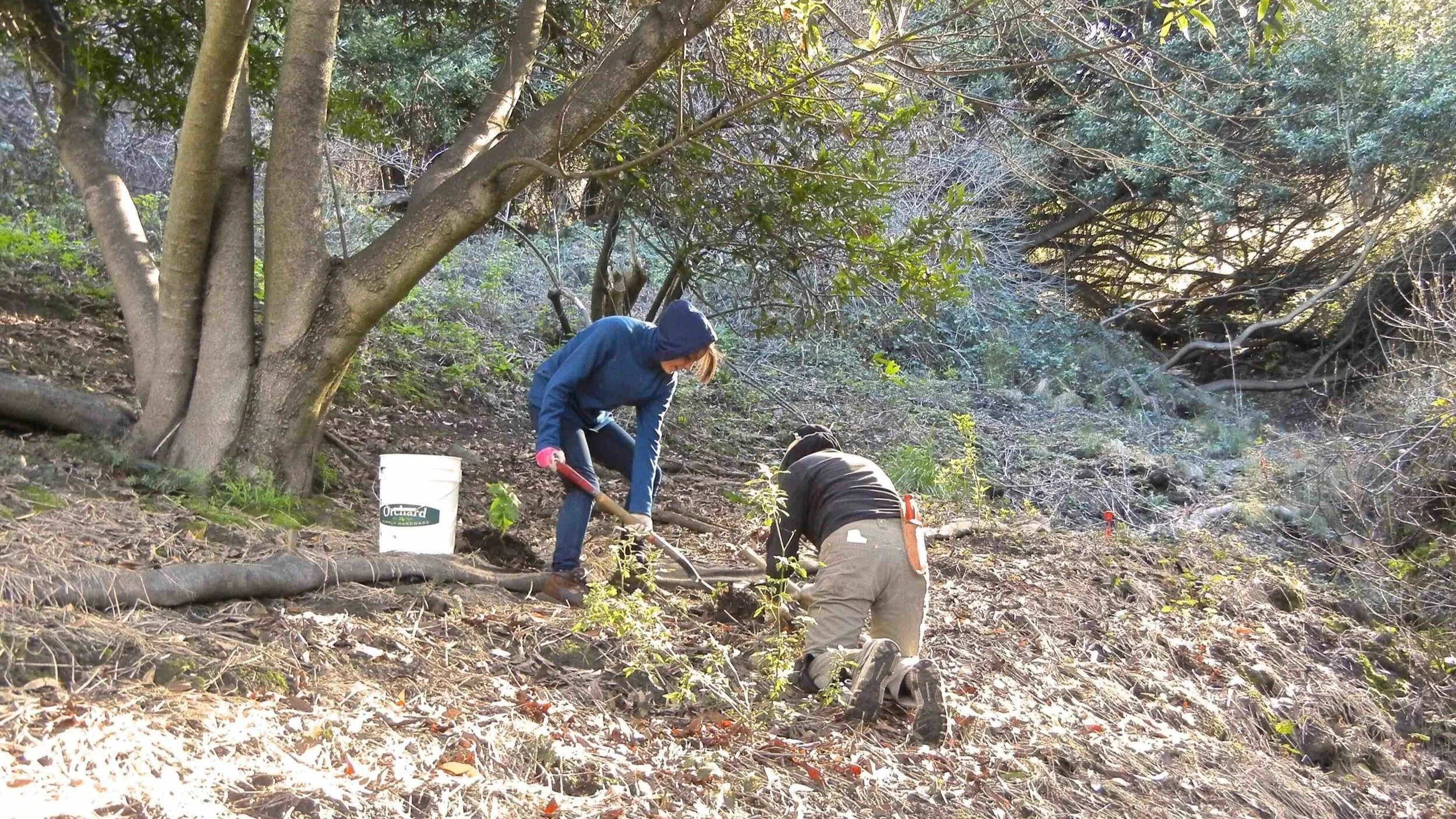To bird is to listen. And once you know the vocalizations of the local birds, an unusual bird stands out. That’s how Erica Rutherford and I discovered a summer tanager last fall in the Claremont Canyon Regional Preserve. Within minutes of stepping out of our car on the October 30, we heard “pit-ti-tuck,” a vocalization reminiscent of an expected (albeit out-of-season) species, the western tanager . . . but not quite. So, when we heard “pit-ti-tuck” again, we ran.
Winter Bird Walk, December 8, 2018
Once again our intrepid little group of birders, led by Dave Quady, headed out on a chilly morning in December before dawn to listen for owls. After hearing the hoot of a Great Horned Owl, all retreated home to warm up with coffee and breakfast before regrouping at 8 A.M. at the top of Claremont Canyon. We saw thirteen bird species, all expected in Claremont Canyon at this time of year. We feel fortunate to have Dave as our leader. He is always full of information and good cheer and has birded in our area for many years.
May 6 bird walk—an ode to spring, by Kay Loughman
Especially with spring birding trips, our walk was as much about listening as seeing. We identified 29 species (see list below), many by sound alone. Resident singers, American Robins were among the first species we heard. Newly-arrived Swainson’s Thrushes announced their presence with single chips–they’ll be producing their spiraling ethereal song in another week or so. Then the “what peevesyou?” call of a distant Olive-sided Flycatcher let us know it too had completed its northward migration.
December 9, 2017 Bird Walk, by Kay Loughman
Last month's bird walk, led by Dave Quady and me, was a quiet affair—only fourteen species were observed over six hours of birding (minus 90 minutes for breakfast). That's an all time low for our winter bird walks, likely due to lack of rain (only one significant rainfall since spring) and strong dry winds the preceding week. Nevertheless our group of birders—four for the early morning owl walk and six for the after breakfast bird walk—enjoyed each others' company while we waited . . .
Winter Bird Walk with Dave Quady, December 11, 2016, by Kay Loughman
Winter bird walk with Dave Quady, by Kay Loughman
Spring Bird Walk: this morning in Claremont Canyon, by Dave Quady
Winter birding field trip, by Kay Loughman
Wild life in the North Hills - the website, by Kay Loughman
A year or two ago I was greatly influenced by a couple of books (“Bowling Alone” and “Better Together”) by a Harvard scholar named Robert D. Putnam. He makes the case that decreasing involvement in community life is bad for individuals and ultimately bad for the world—a gross oversimplification on my part. But, as one who tends to sit at the computer by myself rather than do anything in the community, I knew Putnam’s message was aimed at people like me

